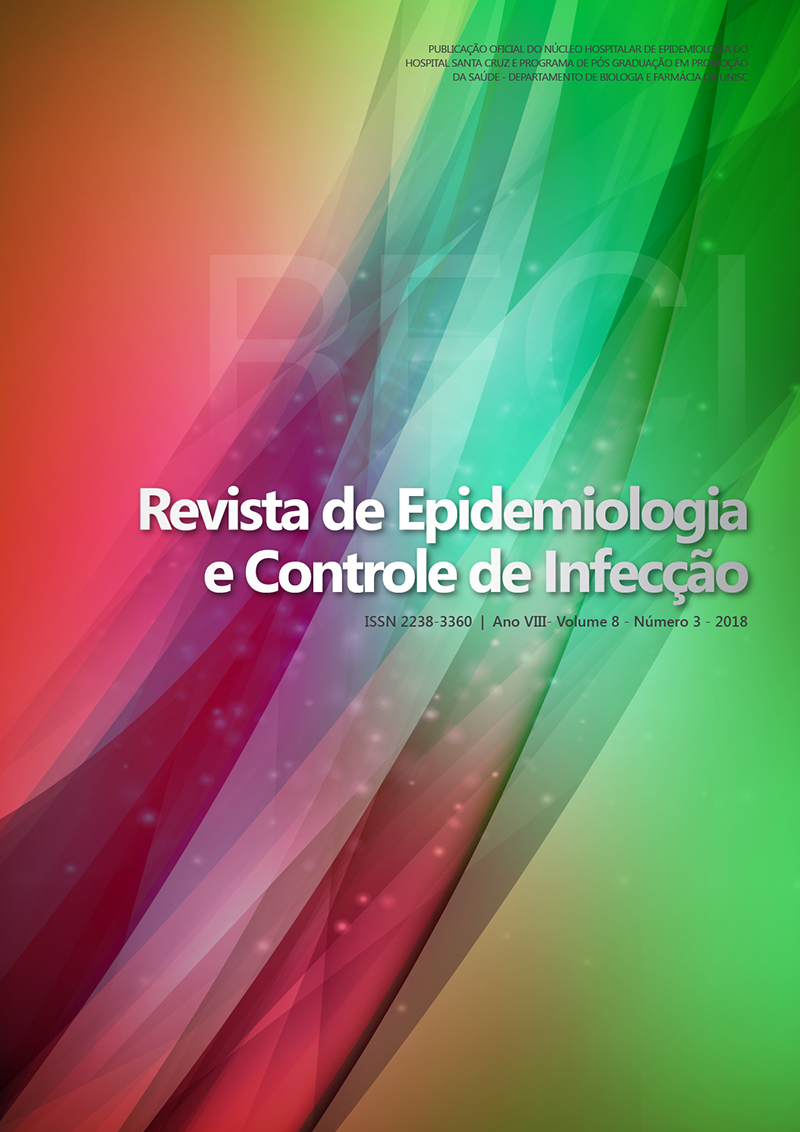Bacteremia caused by Staphylococcus aureus: a fifteen-year analysis of antimicrobial susceptibility in a tertiary hospital in Brazil
DOI:
https://doi.org/10.17058/reci.v8i3.11245Abstract
Background and Objective: Bloodstream infections caused by Staphylococcus aureus are a major cause of morbidity and mortality worldwide. Treatment of S. aureus infections is complex, in part, due to the high prevalence of antimicrobial resistance. Understanding the epidemiology and resistance patterns of this microorganism is a critical point for the proper empirical prescription of antimicrobials. Thus, this study aimed to evaluate the evolution of antimicrobial resistance of S. aureus in a period of fifteen years. Methods: Antimicrobial susceptibility profiles was determined for cefoxitin (30μg), penicillin (10 U), erythromycin (15 μg), clindamycin (2 μg), gentamycin (10 μg),ciprofloxacin (5μg), sulfamethoxazole-trimethoprim (23.75/1.25 μg), rifampicin (5 μg), and tetracycline (30μg) in 720 S. aureus isolated from blood cultures in a tertiary hospital in southern Brazil were analyzed. Sensiblity values was determined according to Clinical Laboratory Standards Institute (CLSI, 2018).The data were obtained from the AGTA Healthcare Information System, LABHOS ® module. Results: The mean frequency of methicillin-resistant S. aureus was 43.74%. Except for penicillin, there was a significant variation of resistance for all antimicrobials in the period evaluated (ρ<0.001). Ciprofloxacin (51.14%), erythromycin (44.99%) and clindamycin (39.85%) had the highest rates of resistance, with tendency to increase. Surprisingly, gentamicina (4%) and sulfamethoxazole-trimethoprim (4%) showed a significant percentage decrease in resistance. For vancomycin, from 2010 to 2015, it was observed an increase in minimum inhibitory concentrations. Conclusion: Although the resistance rate increased in the fifteen years for most antimicrobials, for sulfamethoxazole-trimethoprim and gentamicin a significant reduction occurred, indicating a possible clonal change. This study also evidenced the emergence of S. aureus with intermediate resistance to vancomycin phenotype.Downloads
Downloads
Published
How to Cite
Issue
Section
License
The author must state that the paper is original (has not been published previously), not infringing any copyright or other ownership right involving third parties. Once the paper is submitted, the Journal reserves the right to make normative changes, such as spelling and grammar, in order to maintain the language standard, but respecting the author’s style. The published papers become ownership of RECI, considering that all the opinions expressed by the authors are their responsibility. Because we are an open access journal, we allow free use of articles in educational and scientific applications provided the source is cited under the Creative Commons CC-BY license.


